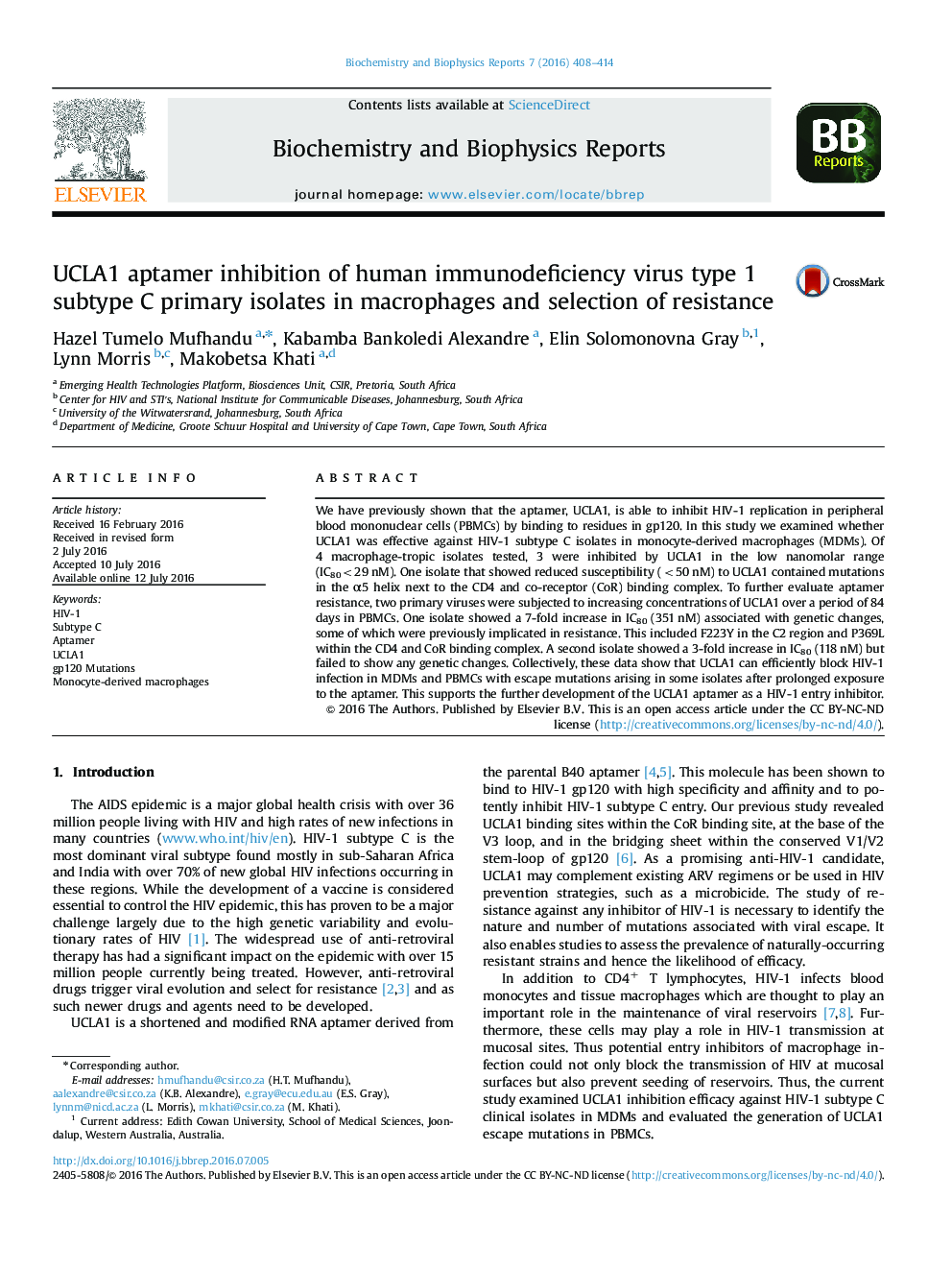| Article ID | Journal | Published Year | Pages | File Type |
|---|---|---|---|---|
| 1941650 | Biochemistry and Biophysics Reports | 2016 | 7 Pages |
Abstract
We have previously shown that the aptamer, UCLA1, is able to inhibit HIV-1 replication in peripheral blood mononuclear cells (PBMCs) by binding to residues in gp120. In this study we examined whether UCLA1 was effective against HIV-1 subtype C isolates in monocyte-derived macrophages (MDMs). Of 4 macrophage-tropic isolates tested, 3 were inhibited by UCLA1 in the low nanomolar range (IC80<29 nM). One isolate that showed reduced susceptibility (<50 nM) to UCLA1 contained mutations in the α5 helix next to the CD4 and co-receptor (CoR) binding complex. To further evaluate aptamer resistance, two primary viruses were subjected to increasing concentrations of UCLA1 over a period of 84 days in PBMCs. One isolate showed a 7-fold increase in IC80 (351 nM) associated with genetic changes, some of which were previously implicated in resistance. This included F223Y in the C2 region and P369L within the CD4 and CoR binding complex. A second isolate showed a 3-fold increase in IC80 (118 nM) but failed to show any genetic changes. Collectively, these data show that UCLA1 can efficiently block HIV-1 infection in MDMs and PBMCs with escape mutations arising in some isolates after prolonged exposure to the aptamer. This supports the further development of the UCLA1 aptamer as a HIV-1 entry inhibitor.
Related Topics
Life Sciences
Biochemistry, Genetics and Molecular Biology
Biochemistry
Authors
Hazel Tumelo Mufhandu, Kabamba Bankoledi Alexandre, Elin Solomonovna Gray, Lynn Morris, Makobetsa Khati,
